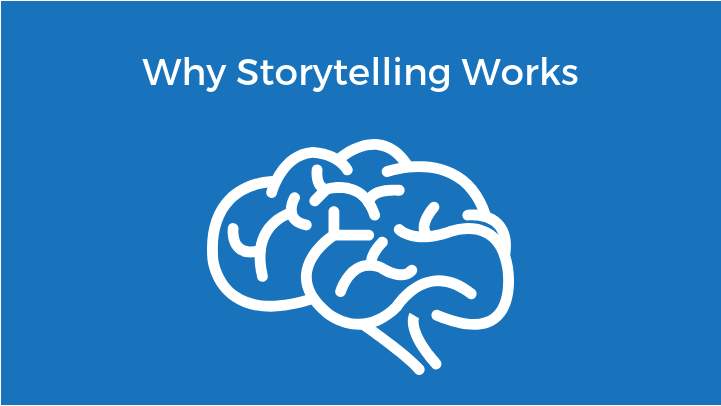

Storytelling is a word that is appearing more frequently in recent times and there are those who will write it off as another example of marketing ‘fluff’. Those people could not be more wrong.
There is science behind why we’re all suckers for a really good story and by taking some time to understand it and examine the key components of a good story we can significantly enhance our own marketing efforts and the engagement and results that we’re able to deliver.
A quick online search for ‘why storytelling works’ returns no fewer than 13 million results.
For the purposes of this blog I’ve summarised some of my favourite observations from just a few of the reports and articles available on the subject.
There was an article from a guy called Paul J Zak pubished in the Harvard Business Review in 2014 under this heading and it’s very revealing.
And Paul has some credibility in this space. He’s Founding Director of the Center for Neuroeconomics Studies and a Professor of economics, psychology and management at Claremont Graduate University.
He’s also author of a book called The Trust Factor: The Science of Creating High Performance Companies.
Paul Zak outlines the role that the neurochemical, oxytocin, plays in motivating cooperation with others.
Oxytocin produces a “it’s safe to approach others” signal in our brains. When this chemical is produced, our sense of empathy is enhanced – our ability to experience the emotions of others.
Paul’s work went on to discover that narrative shot on video rather than face to face was as effective at causing oxytocin synthesis.
This in itself goes a long way to explaining why video works so well as a communication medium. We are effectively able to inpsire the same reactions from people watching a video as we can when we are involved in a face to face communication.
This offers us all a huge opportunity to scale our businesses through a clear definition of our reason for existing and the problems that we are solving for our customers.
The article in the Harvard Business Review goes on to talk about the structure of the story you are telling being a key factor in its effectiveness. Paul says this:
Think for a second about the structure of the last movie you watched, the last book you read, your favourite TV drama.
It was most likely the tension within that story that kept you hooked.
Who is going to get voted off Bake Off this week?
Whether it’s the love interest that you hope works out (John & Kayleigh in Car Share?)
The impending disaster that is so narrowly avoided (Speed with Keanu Reeves – Yes, you stuck with the story in a Keanu Reeves movie. That should be all the evidence you need.)
Or the triumph of the underdog when all the odds were stacked against them (Rocky?)
It’s that tension that leads you to conclude that it was a great TV programme, film, book.
And if you didn’t rate the last film, TV programme or book that you consumed then the chances are that the tension wasn’t sufficient to sustain your attention – it wasn’t engaging enough to produce the levels of oxytocin required to inspire you to action.
So what’s your story?
Why should anyone care?
And where’s the tension?
Paul Zak wraps up his article by saying
There is lots more information available to support this and one of my favourite examples comes from an experiment carried out at Stanford’s Graduate School of Business.
Jennifer Aaker is a Marketing Professor at Stanford Graduate School and back in 2014 she had each of her students give a 1 minute pitch.
9 of the 10 pitches were dominated by facts and figures to support the argument being made or the position being taken – while only 1 of the 10 used a human story to make the case.
On being asked to write down everything that they remembered about each pitch only 5% were able to cite a statistic – while a huge 63% remembered the story that they had been told.
Commenting on the results, Jennifer Aaker said
These are just 2 examples of the 13 million articles you can find on why storytelling works so there’s plenty more out there if you still need to be convinced.
If you’re sold on the idea what are you going to do next to build your own powerful brand story?
Read More:
Paul J Zak – Why Your Brain Loves Good Storytelling (HBR website)
Paul J Zak – The Trust Factor: The Science of Creating High Performance Companies
The Guardian – Science of Storytelling and how to use it in your marketing